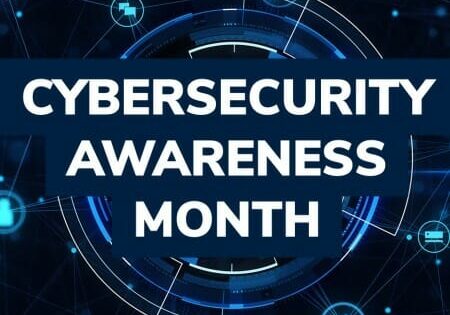Cybersecurity Awareness Month
October 31, 2019
Your 2019 Cheat Sheet
National Cybersecurity Awareness Month is the perfect time to take a step back and assess cybersecurity habits and practices. But rather than having to dig through hundreds of articles, we put together your 2019 Cybersecurity Awareness Month cheat sheet.
Before we jump in, remember that there are plenty of things in life that, over time, become instinctual habits. Think of wearing your seatbelt, locking your door, or frantically hitting every pocket to make sure you have your phone. The same applies to cybersecurity. The digital age isn’t going anywhere, so once you begin to slowly and strategically adopt best practices, it will eventually come together and be like riding a bike.
The basics.
Let’s start with the basics. Protecting your organization means first educating individuals with the right info, because in the era of social engineering, they are your weakest link. The trifecta of strong passwords, multi-factor authentication and end user awareness training are good places to start for your organization to be ahead of the game (and cybercriminals).
While you’re establishing the basics, it’s important to note that improved security is a continuous process. This is the time to get in the habit of consistently, repeating processes such as patching and vulnerability testing and then comparing results against defined metrics to evaluate endless improvements. Learn more about the process here.
The foundation.
While the basics vastly improve your security, other tools and services are necessary to continuously protect the environment. A strong security plan starts with visibility. You can’t protect against devices that you don’t know are on the network. As the number of connected devices continues to increase, it becomes more challenging to effectively monitor and manage traffic on the network. The proper visibility tools give real-time insight into when devices connect and the traffic on the network. Agentless visibility is great first step to securing the network.
The investments.
Tools cost money. As a result, the C-suite and board want justifications for the (necessary) increase to the security budget. Don’t miss out on budget increases due to inefficiencies. A common issue is that after initial implementation, tools are rarely fully utilized or managed. Possible reasons include a lack of staff to monitor and manage the tools and missed opportunities for orchestration and automaton. When investing in tools, it’s critical to ensure they cohesively work together to strengthen the overall security posture.
Cyber security is an evolving state but take it one step at a time and your organization will be headed the right direction. Remember, if at any time you need help, we’re here. Our team of advisors are ready to work alongside your team to ensure all the pieces of your plan fit together.

Posted in Cybersecurity Technology, Security (Legacy)
